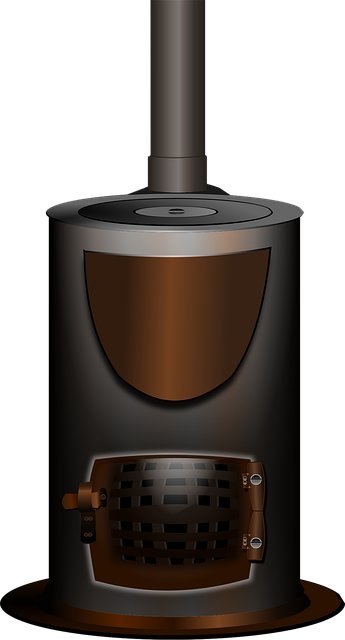Instant water heaters, also known as tankless or on-demand systems, revolutionize home hot water access by eliminating storage tanks and providing continuous heating. They save space, reduce costs, and lower environmental impact, with smart integration offering remote control via smartphone apps or voice commands for efficient energy use. These energy-efficient devices are easy to install and maintain, promising a sustainable future for modern homes with whole house systems requiring reliable hot water.
In today’s tech-driven world, smart home automation is transforming daily routines. One oft-overlooked aspect of modern living is water heating—until now. Smart instant water heaters are integrating seamlessly with home automation systems, offering unprecedented control and efficiency. This article delves into the technology powering these devices, explores their benefits, and highlights how they enhance convenience and energy savings in modern homes. We also cover installation, maintenance, and future prospects for this innovative appliance.
- Understanding Instant Water Heaters: Technology and Benefits
- Integrating with Home Automation: The Smart Connection
- Advantages for Modern Living: Convenience and Efficiency
- Installation, Maintenance, and Future Prospects
Understanding Instant Water Heaters: Technology and Benefits

Instant water heaters, also known as tankless or on-demand hot water systems, have been transforming the way we access hot water in our homes. This innovative technology offers a significant departure from traditional storage tanks, eliminating the need for large reservoirs of heated water. Instead, these heaters provide continuous water heating, delivering hot water instantly upon demand.
The benefits of instant water heaters are manifold. They not only save space compared to bulky tank systems but also prove highly energy-efficient, as they heat water only when needed. This on-demand approach translates to considerable cost savings on energy bills and reduces environmental impact. Whether powered by electricity or gas, these heaters ensure a consistent supply of hot water for various applications, from showering to cooking, making them the perfect solution for modern homes and whole house systems seeking both convenience and sustainability.
Integrating with Home Automation: The Smart Connection

The integration of smart instant water heaters with home automation systems represents a significant leap forward in modern living. This seamless connection allows users to control their hot water supply just as they would any other smart device, offering both convenience and energy efficiency. With simple voice commands or a tap on a smartphone app, you can instantly activate your shower or sink’s continuous water heating, eliminating the wait for hot water to arrive.
This integration goes beyond basic functionality; it enables advanced features like scheduling and temperature control. Users can set specific times for hot water availability, ensuring efficient energy use during peak hours. Moreover, tankless water heating systems, both electric instant heaters and gas instant heaters, offer space-saving benefits and significant energy savings compared to traditional whole house systems or point of use heaters.
Advantages for Modern Living: Convenience and Efficiency

In today’s fast-paced and tech-driven world, a smart instant water heater offers numerous advantages for modern living. With its on-demand hot water feature, this innovative technology eliminates the need for traditional tankless water heating systems, providing continuous water heating without the constant energy consumption of a storage tank. This not only saves space but also contributes to energy efficiency, making it an ideal solution for eco-conscious households.
Moreover, integrating a smart instant water heater with your home automation system creates a seamless and convenient experience. Electric or gas instant heaters can be controlled remotely, allowing you to adjust temperature settings and even schedule hot water usage from the comfort of your smartphone. This level of control enhances both convenience and efficiency, ensuring that hot water is readily available when needed without wasting energy during off-peak hours, thus further optimizing your home’s overall energy performance.
Installation, Maintenance, and Future Prospects

The installation process for a smart instant water heater is relatively straightforward and can often be done by homeowners with basic DIY skills. These tanks are designed to seamlessly integrate with existing home automation systems, allowing users to control their hot water supply through smartphone apps or voice assistants. This level of connectivity offers convenience and energy-saving potential, as users can schedule heating times or adjust settings remotely.
Maintenance requirements for these heaters are minimal compared to traditional tanked models. Without a storage tank, there’s no need for regular flushing or chemical treatment. Additionally, instant water heaters have longer lifespans due to their straightforward design. As technology advances, future prospects include enhanced integration with smart homes, improved efficiency through advanced heating elements, and potentially, the development of whole house systems that provide continuous, on-demand hot water without compromising energy efficiency. This could revolutionize point-of-use heating, making it a space-saving and eco-friendly option for modern households.
The integration of smart instant water heaters into home automation systems represents a significant step forward in modern living. By leveraging advanced technology, these heaters offer unparalleled convenience and efficiency, ensuring users enjoy hot water on demand while contributing to energy conservation. As the market continues to evolve, with improved installation processes and enhanced maintenance options, the future looks bright for this innovative solution, further solidifying its place as a must-have in today’s smart homes.
